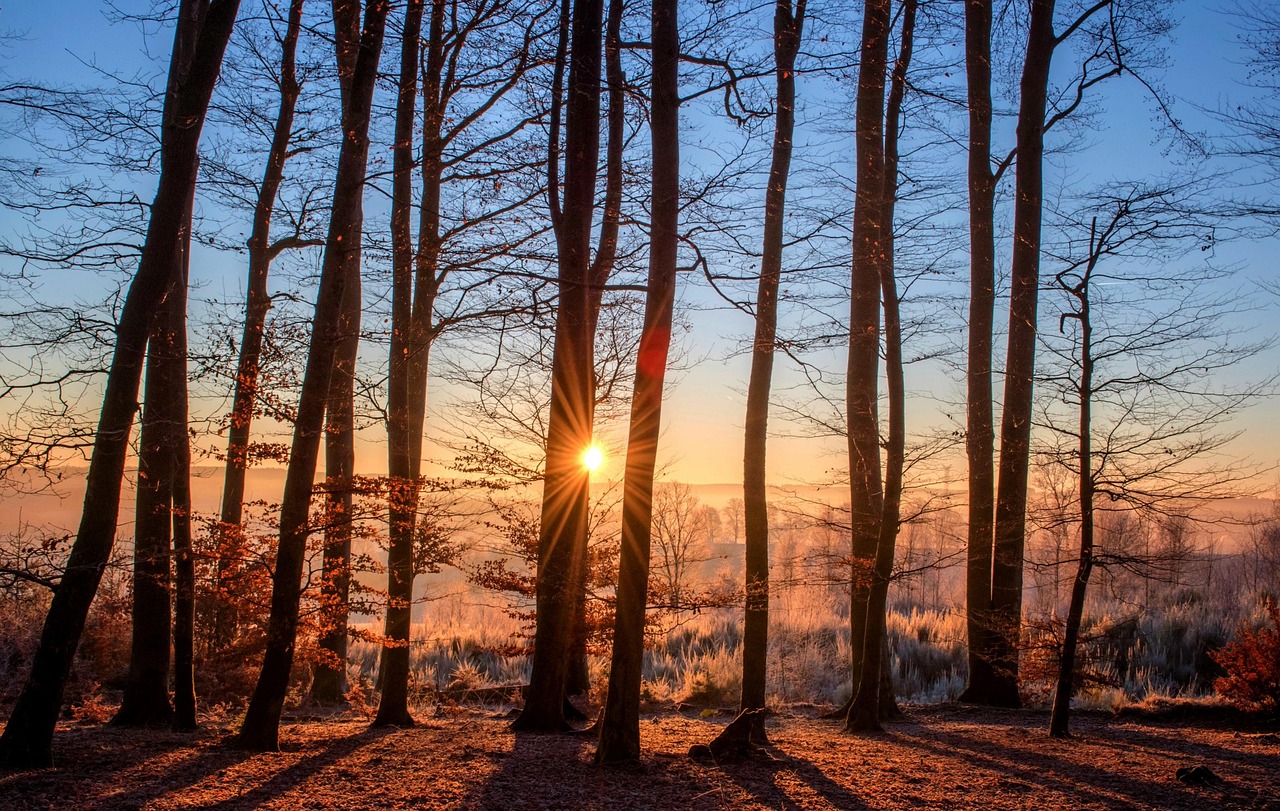The Kadamba tree (Neolamarckia cadamba) exhibits a rapid growth rate, typically reaching heights of 30 to 40 meters within just 10 to 15 years. This makes it an excellent choice for providing quick shade and a sustainable source of timber.
Known for its majestic height and wide canopy, the Kadamba tree is native to tropical regions of Asia. It thrives in various soil types and environmental conditions. Its quick growth and adaptability make it a popular choice for both urban landscaping and forestry projects. The tree is not only valued for its timber but also for its ornamental beauty and ecological benefits.

The Kadamba tree can grow in diverse climates, but it flourishes best in warm, humid environments. It is often used for shade in gardens, parks, and along roadsides. In addition, its wood is prized for being lightweight yet durable, making it suitable for various construction purposes. Understanding the growth rate of the Kadamba tree is essential for anyone considering planting this species for shade or timber production.
Growth Rate Characteristics
The growth rate of the Kadamba tree is influenced by several factors, including soil quality, water availability, and climate conditions. Under optimal conditions, the tree can grow up to 3 meters per year during its early years. This rapid growth allows it to provide shade quickly, making it an appealing option for those looking to establish greenery in their surroundings.
Here are some key factors that affect the growth rate of the Kadamba tree:

- Soil Quality: Well-drained, fertile soil enhances growth.
- Water Availability: Adequate rainfall or irrigation supports vigorous growth.
- Temperature: Warm temperatures promote faster growth rates.
- Sunlight: Full sun exposure is ideal for optimal development.
In addition to these factors, proper care and maintenance can significantly impact the overall health and growth rate of the Kadamba tree. Regular watering during dry spells and occasional fertilization can help the tree thrive.
Timber and Shade Benefits
The Kadamba tree is not only recognized for its rapid growth but also for the high-quality timber it produces. The wood is commonly used in furniture making, construction, and even in the production of paper. Its lightweight nature makes it easier to handle compared to other hardwoods, while its durability ensures longevity in various applications.
Furthermore, the Kadamba tree plays a significant role in providing shade due to its broad canopy. The dense foliage creates a cool environment underneath, making it an excellent choice for parks and residential areas. The shade offered by these trees can help reduce energy costs during hot seasons by lowering temperatures in nearby buildings.

Below is a comparison of the Kadamba tree’s characteristics related to shade and timber:
| Characteristic | Shade | Timber |
|---|---|---|
| Growth Rate | Fast (up to 3 meters/year) | Fast maturity (10-15 years) |
| Wood Quality | N/A | Lightweight and durable |
| Canopy Size | Wide and dense | N/A |
| Uses | Shade in urban areas | Furniture and construction |
The Kadamba tree also contributes positively to the environment. Its extensive root system helps prevent soil erosion, while its leaves provide habitat for various wildlife species. Planting Kadamba trees can enhance biodiversity in an area and improve air quality by absorbing carbon dioxide.
In summary, the Kadamba tree’s remarkable growth rate makes it a valuable asset for both shade provision and timber production. Understanding its characteristics can assist landowners and gardeners in making informed decisions about incorporating this species into their landscapes.
Factors Influencing Kadamba Tree Growth
Understanding the factors that influence the growth of the Kadamba tree is essential for optimizing its growth rate and ensuring successful cultivation. Several environmental and biological factors come into play, including soil composition, climatic conditions, and care practices.

Soil Composition
The Kadamba tree thrives in well-drained, loamy soil that is rich in organic matter. The following soil characteristics are particularly beneficial:
- pH Level: A slightly acidic to neutral pH (between 6.0 and 7.5) promotes healthy growth.
- Nutrient Content: High levels of nitrogen, phosphorus, and potassium are vital for robust tree development.
- Moisture Retention: Soil that retains moisture without becoming waterlogged is ideal for Kadamba trees.
Before planting, it is advisable to conduct a soil test to determine the nutrient levels and pH. Amending the soil with organic compost can greatly enhance its fertility and improve the growth potential of the Kadamba tree.
Climate Requirements
The climate plays a crucial role in the growth and health of the Kadamba tree. Here are some important climatic factors to consider:
- Temperature: Kadamba trees prefer warm temperatures, ideally between 20°C to 35°C (68°F to 95°F).
- Rainfall: An annual rainfall of 1,200 mm to 2,500 mm (47 inches to 98 inches) is optimal for healthy growth.
- Humidity: High humidity levels, typical in tropical regions, are beneficial for the rapid growth of this species.
In areas with less than optimal rainfall, supplementary irrigation can be implemented, especially during the dry season, to support growth.
Planting and Care Practices
Proper planting and care practices are essential for promoting healthy growth rates in Kadamba trees. Following these guidelines can help ensure their successful establishment:
Site Selection
Selecting an appropriate site is critical. Look for locations that provide ample sunlight and good drainage. Avoid areas prone to flooding or waterlogging.
Planting Techniques
When planting a Kadamba tree, follow these steps for best results:
- Prepare the planting hole, making it at least twice the width of the root ball.
- Add organic compost to the soil to enhance fertility.
- Place the tree in the center, ensuring that the root collar is level with the ground surface.
- Backfill with soil, gently firming it around the roots to eliminate air pockets.
- Water thoroughly after planting to help settle the soil.
Irrigation and Fertilization
Maintaining adequate moisture is crucial during the establishment phase. Regular watering encourages deep root development. Once established, the Kadamba tree is relatively drought-tolerant but will benefit from supplemental watering during prolonged dry spells.
Fertilization should be performed during the growing season using a balanced fertilizer that contains essential nutrients. Follow these guidelines:
- Frequency: Fertilize every 6 to 8 weeks during the active growing season.
- Type: Use a nitrogen-rich fertilizer to support leafy growth and overall vigor.
Pest and Disease Management
The Kadamba tree is susceptible to various pests and diseases that can hinder its growth. Awareness and proactive management are essential in keeping the tree healthy:
Common Pests
Pests such as aphids and scale insects may affect Kadamba trees. These pests can be managed through:
- Regular Inspection: Check leaves and stems periodically for signs of infestation.
- Natural Predators: Encourage beneficial insects like ladybugs to control pest populations.
Disease Prevention
Diseases like root rot can occur if the tree is overwatered or planted in poorly drained soil. To prevent disease:
- Avoid Overwatering: Ensure proper drainage in planting sites.
- Pruning: Regularly prune dead or diseased branches to maintain airflow and health.
By implementing these practices, gardeners and landowners can maximize the growth rate of Kadamba trees while ensuring their health and vitality for long-term benefits.
Environmental Benefits of Kadamba Trees
The Kadamba tree is not only valued for its rapid growth and timber production but also for the significant environmental benefits it provides. Understanding these advantages helps in appreciating the importance of planting and conserving this species.
Improving Air Quality
Kadamba trees play a vital role in enhancing air quality. They absorb carbon dioxide and release oxygen through the process of photosynthesis. This makes them crucial for combating climate change and improving urban air quality. Key benefits include:
- Carbon Sequestration: Kadamba trees absorb large amounts of CO2, which helps reduce greenhouse gases in the atmosphere.
- Oxygen Production: A mature Kadamba tree can produce enough oxygen to support multiple people, contributing to a healthier environment.
Soil Erosion Control
The extensive root system of the Kadamba tree helps stabilize the soil, making it effective in preventing erosion. Here are some ways it contributes:
- Root Structure: The deep and widespread roots anchor the soil, preventing it from being washed away during heavy rains.
- Soil Fertility: As leaves and branches fall, they decompose and enrich the soil with organic matter, enhancing fertility.
Biodiversity Promotion
Kadamba trees create habitats for various wildlife species. Their large canopy provides shelter and food sources for birds, insects, and small mammals. By planting Kadamba trees, you can help promote biodiversity in the following ways:
- Providing Habitat: The dense foliage serves as a nesting ground for various bird species.
- Supporting Pollinators: Flowers of the Kadamba tree attract bees and butterflies, which are essential for pollination.
Cultural Significance of Kadamba Trees
Kadamba trees also hold cultural importance in various regions, particularly in South Asia. Their historical and religious significance adds to their value beyond ecological benefits.
Religious Significance
In many cultures, Kadamba trees are revered for their beauty and association with spirituality. Here are some points highlighting their religious importance:
- Hinduism: The Kadamba tree is often associated with Lord Krishna, and its flowers are used in religious offerings.
- Buddhism: In some traditions, Kadamba trees symbolize enlightenment and are planted around temples and monasteries.
Cultural Uses
Beyond religious practices, Kadamba trees have various cultural uses:
- Traditional Medicine: Parts of the tree are used in traditional medicine for treating ailments.
- Crafting: The wood is used for making handicrafts and traditional furniture due to its light weight and durability.
Economic Value of Kadamba Trees
The economic value of the Kadamba tree extends from timber production to its role in eco-tourism. Understanding its financial benefits can encourage more landowners to plant this species.
Timber Production
Kadamba wood is light yet strong, making it ideal for various applications. Key aspects include:
- Furniture Manufacturing: The lightweight nature of Kadamba wood makes it popular for crafting furniture.
- Construction Uses: Its durability allows it to be used in building structures such as houses and sheds.
Eco-Tourism Potential
The beauty and ecological benefits of Kadamba trees can attract eco-tourism. This can provide additional income for local communities through activities such as:
- Nature Tours: Guided tours focusing on the unique flora and fauna associated with Kadamba trees.
- Cultural Festivals: Events celebrating the cultural significance of Kadamba trees can draw visitors and promote local traditions.
Challenges in Cultivation
Despite its numerous benefits, cultivating Kadamba trees comes with certain challenges that need to be addressed for successful growth.
Pest Infestations
Pests can pose a threat to the health and growth of Kadamba trees. Common pests include:
- Aphids: These small insects can weaken the tree by sucking sap from the leaves.
- Caterpillars: Certain species can defoliate trees if not managed effectively.
Disease Management
Diseases such as root rot can severely impact Kadamba tree health. Effective management strategies should include:
- Site Selection: Choosing well-drained areas to minimize the risk of root rot.
- Regular Monitoring: Keeping an eye on tree health to catch issues early.
By understanding both the benefits and challenges associated with Kadamba trees, individuals can make informed decisions regarding their cultivation and care. This knowledge fosters better practices that enhance their growth rate and overall contribution to the environment and community.
Future Prospects for Kadamba Tree Cultivation
The Kadamba tree presents numerous opportunities for sustainable development and environmental conservation. As awareness of its benefits grows, more individuals and organizations are considering Kadamba trees for various applications. Here are some future prospects worth exploring:
Afforestation and Reforestation Initiatives
Given its rapid growth rate and ecological advantages, the Kadamba tree is an excellent candidate for afforestation and reforestation projects. These initiatives can contribute to restoring degraded lands and enhancing biodiversity. Some key points include:
- Restoring Ecosystems: Planting Kadamba trees can help restore native habitats, benefiting local wildlife.
- Carbon Credits: Organizations involved in carbon offset projects can utilize Kadamba trees to earn carbon credits due to their carbon sequestration capabilities.
Urban Greening Projects
As cities continue to expand, urban greening projects become essential for improving air quality and providing shade. The Kadamba tree can play a significant role in these efforts:
- Street Trees: Kadamba trees can be planted along streets and sidewalks to provide shade and enhance aesthetics.
- Parks and Recreational Areas: Their wide canopy makes them suitable for parks, creating relaxing environments for communities.
Community Education and Engagement
Educating communities about the benefits of Kadamba trees can lead to increased participation in planting initiatives. Some strategies might include:
- Workshops: Organizing workshops to teach individuals about the ecological and economic advantages of planting Kadamba trees.
- School Programs: Integrating tree planting into school curriculums to foster environmental stewardship among young people.
Final Thoughts
The Kadamba tree represents a multifaceted resource with immense potential for providing fast shade, valuable timber, and numerous environmental benefits. Its rapid growth rate allows it to fulfill immediate needs while also contributing positively to long-term ecological health. By understanding its cultivation requirements, associated challenges, and multiple benefits, landowners, communities, and environmentalists can make informed decisions that promote sustainability.
In summary, the Kadamba tree is not just a fast-growing species; it is a vital player in enhancing biodiversity, improving air quality, and supporting local economies. Its cultural significance enriches the communities that embrace it, while its potential for afforestation and urban greening makes it an essential component of future environmental strategies.
As we look ahead, the integration of Kadamba trees into various landscapes—whether urban, rural, or forested—will be crucial in addressing environmental challenges. Increasing awareness and participation in planting initiatives will ensure that future generations can enjoy the shade, beauty, and benefits that this remarkable tree has to offer.
